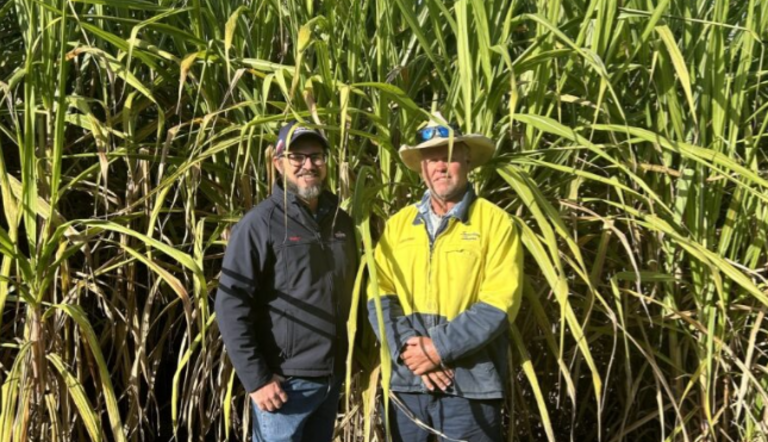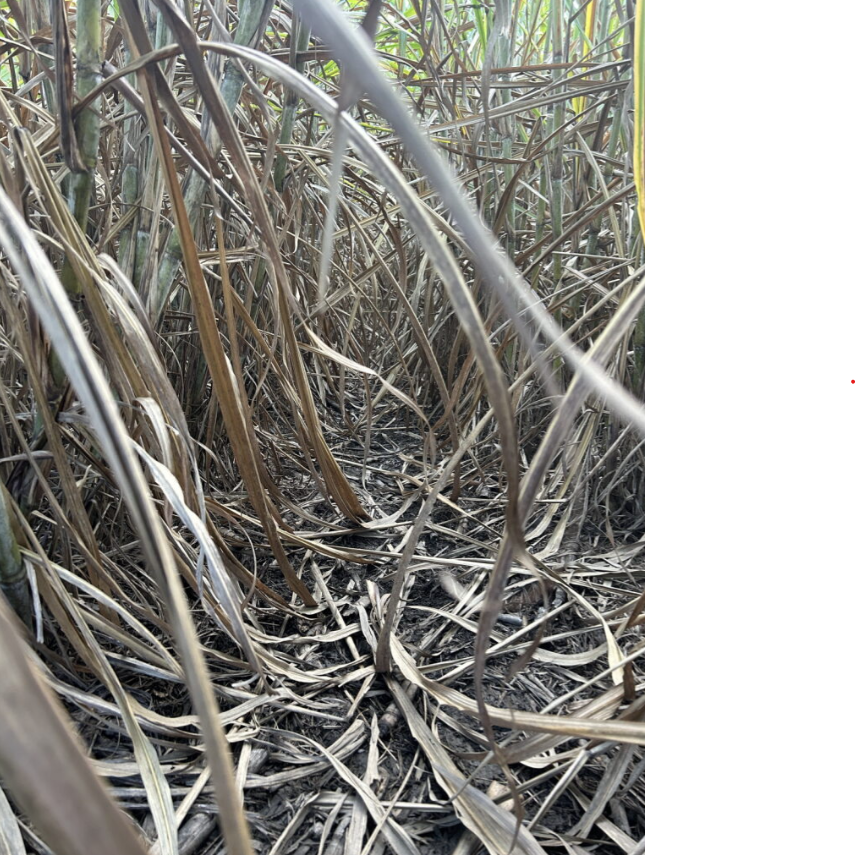
NSW canegrowers winning the war on weeds

Norco Agrisolutions Grafton-based agronomist Trent Stainley pictured chatting with Dean Lawrence, who operates a sugarcane and cattle enterprise near Yamba in Northern New South Wales. Dean says the use of Bobcat i-Maxx and, more recently, Palmero TX herbicides is helping to keep paddocks “clean” over several properties including leased land.
MORE and more canegrowers in Northern New South Wales are now getting on top of difficult grass and broadleaf weeds by deploying powerful herbicides in a one-two punch rotation strategy that is achieving extended control and helping to reduce weed seed banks.
Summer grasses, barnyard grass, billygoat weed and various others have been a bugbear over many years, however the wider use in recent times of Palmero® TX and Bobcat® i-MAXX herbicides, both from ADAMA Australia, has helped growers to win the war against the weeds.
Both herbicides have a similar use pattern and no time of use restrictions. Palmero TX contains isoxaflutole and terbuthylazine active ingredients, while Bobcat i-MAXX combines hexazinone and imazapic.
At the ‘Yakaloo’ sugarcane property on Woodford Island, continuing to reduce the weed seed bank remains a key weed management aim and Palmero TX has provided extended control, as well as an easier solution for Manager Luke Moloney.
Pictured shows the excellent weed control achieved at ‘Yakaloo’ in ratoon cane following an application of Palmero TX herbicide at 1.5 kilograms per hectare at the out-of-hand stage.
Luke manages about 245 hectares of sugarcane for owners Alister and Helen McFarlane at the property, which also accommodates some cattle.
Luke said summer grasses, nutgrass, crowsfoot grass, billygoat weed, cooch and para grass, which can come into the property along river banks, all posed concerns and required strong management.
He said good fallow management incorporating key herbicide tools was the best attack against target grass and broadleaf weeds prior to a ratooning program, and the use of Palmero TX herbicide once crops were established had provided further benefits.
Luke said their focus has been to use Palmero TX after harvest and in early ratoons.
“We get that pre-emergent activity for when the weeds do come and we add some paraquat if weeds have emerged and it is before the cane shoots,” Luke said.
He said they previously used a tank mix of isoxaflutole and amicarbazone after harvest and this was still effective, however the Palmero TX offered some key advantages.
“We had to mix before, whereas we don’t have to mix with Palmero TX. It is easy to do in one hit and the length of control is really good.”
“I think we are getting a better kill on the vines and longer control than the other brew.”
Luke said the excellent control with Palmero TX had prompted some growers to apply one upfront application only with their crops, however at ‘Yakaloo’ they decided to always follow it at the out-of-hand stage with application of “softer” herbicides.
“We also change up the herbicides we use every couple of ratoons,” Luke said.
They previously used a herbicide mix with atrazine at the out-of-hand stage, but recently they applied Bobcat i-MAXX and Luke said it had some extra “woof”.
Near Yamba, cane and cattle producer Dean Lawrence has a sharp focus on “keeping paddocks clean” of weeds and his recent weed control and management strategies have them in the best shape they’ve been.
Dean has about 160 hectares under production to cane on several properties, including leased land, from James Creek to Palmers Channel, and also runs about 80 Angus breeders and tends to a few nut trees.
Summer grasses, including paspalum, as well as cooch, can cause concerns and Dean has had to spell paddocks previously to improve their control, however he said once cleaned, “you can keep paddocks clean”.
Atrazine, diuron and herbicide mixes were used against the weeds in the past, but Dean has since worked closely with Norco Agrisolutions Agronomist Trent Stainley, based at Grafton, and applied Bobcat i-MAXX as well as Palmero TX more recently.
“We always use Palmero TX at plant, when the cane is coming out of the ground, with herbicides like paraquat and 2,4-D. It keeps things really clean for two to three months. It has been every bit as good as other herbicides,” Dean said.
“When the cane comes up under the tractor, we do another herbicide spray with the Irvin legs.
“After harvest, we let the weeds start coming through and the cane grow a little and then we will spray Palmero TX and paraquat, and it gets us right through to that out-of-hand spray.
“The new herbicides have certainly improved the place here and helped to keep on top of weed seed banks,” he said.
For further information on Palmero TX and Bobcat i-MAXX herbicides, growers and advisers can contact their local ADAMA Australia representative or visit ADAMA.com
Media Contact: Andrew Newall | Portfolio and Innovation Manager | Andrew.newall@adama.com | +61 418 224 422
